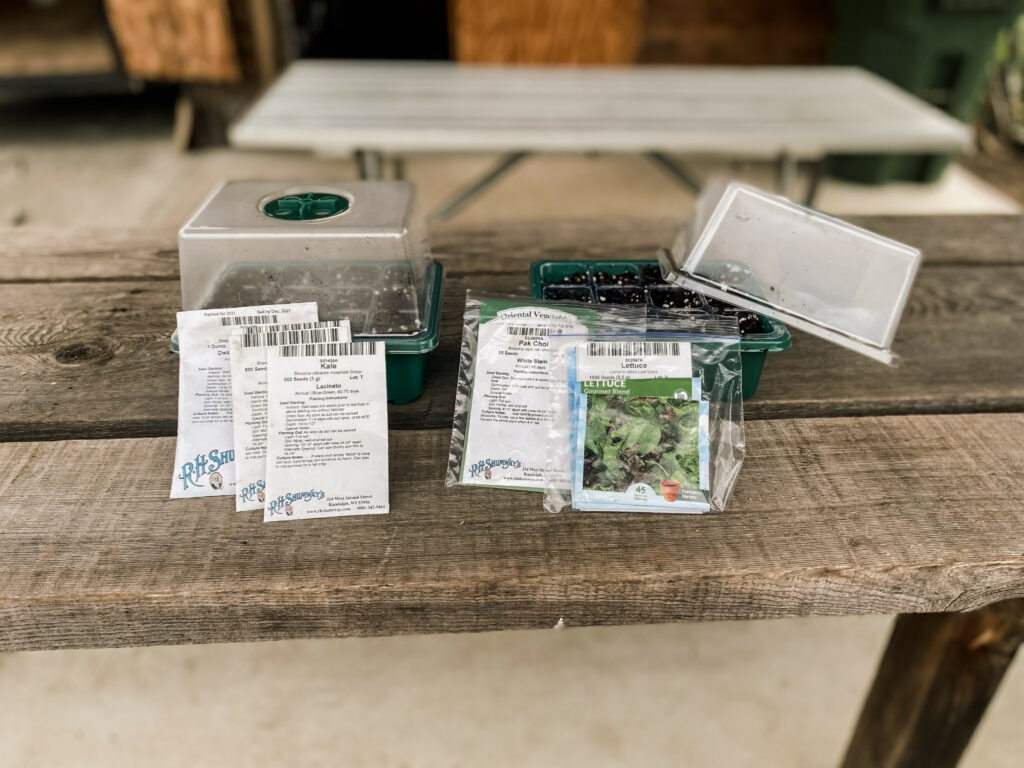Prepare for a Bountiful Fall Garden: 5 Essential Steps
go.ncsu.edu/readext?946482
en Español / em Português
El inglés es el idioma de control de esta página. En la medida en que haya algún conflicto entre la traducción al inglés y la traducción, el inglés prevalece.
Al hacer clic en el enlace de traducción se activa un servicio de traducción gratuito para convertir la página al español. Al igual que con cualquier traducción por Internet, la conversión no es sensible al contexto y puede que no traduzca el texto en su significado original. NC State Extension no garantiza la exactitud del texto traducido. Por favor, tenga en cuenta que algunas aplicaciones y/o servicios pueden no funcionar como se espera cuando se traducen.
Português
Inglês é o idioma de controle desta página. Na medida que haja algum conflito entre o texto original em Inglês e a tradução, o Inglês prevalece.
Ao clicar no link de tradução, um serviço gratuito de tradução será ativado para converter a página para o Português. Como em qualquer tradução pela internet, a conversão não é sensivel ao contexto e pode não ocorrer a tradução para o significado orginal. O serviço de Extensão da Carolina do Norte (NC State Extension) não garante a exatidão do texto traduzido. Por favor, observe que algumas funções ou serviços podem não funcionar como esperado após a tradução.
English
English is the controlling language of this page. To the extent there is any conflict between the English text and the translation, English controls.
Clicking on the translation link activates a free translation service to convert the page to Spanish. As with any Internet translation, the conversion is not context-sensitive and may not translate the text to its original meaning. NC State Extension does not guarantee the accuracy of the translated text. Please note that some applications and/or services may not function as expected when translated.
Collapse ▲It is hard to picture fall when we’re right in the middle of summer, but now is the time to start planning your fall garden! By following these 5 steps you’ll be on your way to a bountiful garden this fall.
Step 1: Assess Your Garden’s Condition
Before you embark on your fall gardening journey, evaluate the current state of your garden. Take note of any pest issues, soil quality, and crop residue from previous seasons. Soil testing is always recommended before planting. These assessments will allow you to identify potential challenges and develop an effective plan for your fall garden.
Step 2: Plan Your Fall Crops
Choose the right crops for your fall garden based on your preferences, our hardiness zone (7a and 7b), and available space in your plot. Popular cool-season vegetables including kale, lettuce, spinach, onions, and carrots thrive during fall. It is helpful to make a list of your desired crops and include their planting dates to ensure a successful harvest. Refer to our planting calendar publication found on our website (www.caldwell.ces.ncsu.edu)
Step 3: Prepare the Soil
Healthy soil is the foundation of any flourishing garden. As stated above, we always recommend testing your soil before planting. We offer free soil testing kits, so stop by our office if you are interested. Along with soil testing, clay soils will always benefit from added organic matter like compost or well-rotted manure.
Step 4: Start Seeds Indoors
For certain vegetables, starting seeds indoors gives them a head start before transplanting them into the garden. You need sterile media and 16-18 hours of light (natural and/or artificial). You can find a south-facing window to put your seeds in if you are going to use natural light. If using fluorescents, forty-watt, 48-inch long fluorescent tubes, with a timer, placed 2 to 4 inches above the seedlings is an adequate set-up. If this is your first time starting seeds inside, easy seeds to get started with are: broccoli, cabbage, lettuce, and kale.

Step 5: Implement Pest Management Strategies
Fall gardens can face their fair share of pests. Here are some Integrated Pest Management (IPM) strategies to consider in your own garden. First, select disease-resistant and pest-tolerant plant varieties suitable for our area. Practice good cultural techniques such as proper watering, spacing, and fertilization to promote plant health. Regularly scout your garden for signs of pests and diseases, and employ mechanical techniques like handpicking or trapping to manage small infestations. Encourage beneficial insects by planting native pollinator plants. Consider using barriers like row covers to protect plants from pests. The last strategy, if pest populations become out of control, you can use insecticidal soaps, horticultural oils, or insecticides. It’s crucial to follow label instructions and apply any chemical control measures judiciously, as part of an integrated approach that emphasizes sustainability and environmental responsibility.
By following these five essential steps, you’ll be well on your way to a thriving fall garden. So, grab your gardening gloves, take out your tools, and plan to reap the rewards of a successful fall harvest.
Helpful Links:




